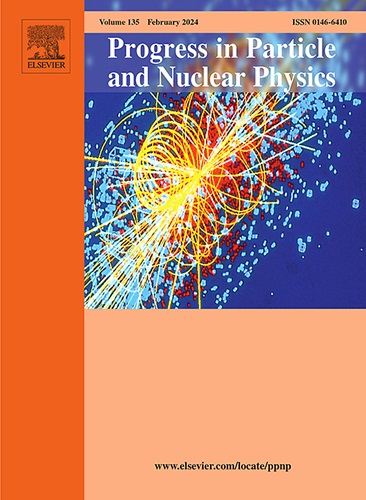硬热环--理论与应用
IF 17.9
2区 物理与天体物理
Q1 PHYSICS, NUCLEAR
引用次数: 0
摘要
在这篇综述中,我们介绍了基于硬热环(HTL)近似的现代热扰动理论的主要方面,包括其理论基础以及在量子电动力学(QED)和量子色动力学(QCD)等离子体中的应用。为了保持简洁,我们将重点放在热平衡情景上,研究各种物理量和设置。具体来说,我们探讨了与重离子物理学相关的高温领域的体热力学性质和实时观测指标。本文章由计算机程序翻译,如有差异,请以英文原文为准。
Hard Thermal Loop—Theory and applications
In this review, we present the key aspects of modern thermal perturbation theory based on the hard thermal loop (HTL) approximation, including its theoretical foundations and applications within quantum electrodynamics (QED) and quantum chromodynamics (QCD) plasmas. To maintain conciseness, we focus on scenarios in thermal equilibrium, examining a variety of physical quantities and settings. Specifically, we explore both bulk thermodynamic properties and real-time observables in high-temperature domains relevant to heavy-ion physics.
求助全文
通过发布文献求助,成功后即可免费获取论文全文。
去求助
来源期刊

Progress in Particle and Nuclear Physics
物理-物理:核物理
CiteScore
24.50
自引率
3.10%
发文量
41
审稿时长
72 days
期刊介绍:
Taking the format of four issues per year, the journal Progress in Particle and Nuclear Physics aims to discuss new developments in the field at a level suitable for the general nuclear and particle physicist and, in greater technical depth, to explore the most important advances in these areas. Most of the articles will be in one of the fields of nuclear physics, hadron physics, heavy ion physics, particle physics, as well as astrophysics and cosmology. A particular effort is made to treat topics of an interface type for which both particle and nuclear physics are important. Related topics such as detector physics, accelerator physics or the application of nuclear physics in the medical and archaeological fields will also be treated from time to time.
 求助内容:
求助内容: 应助结果提醒方式:
应助结果提醒方式:


